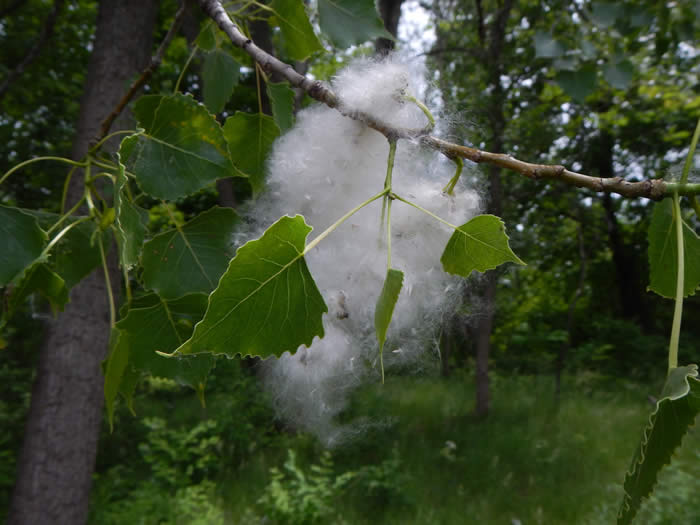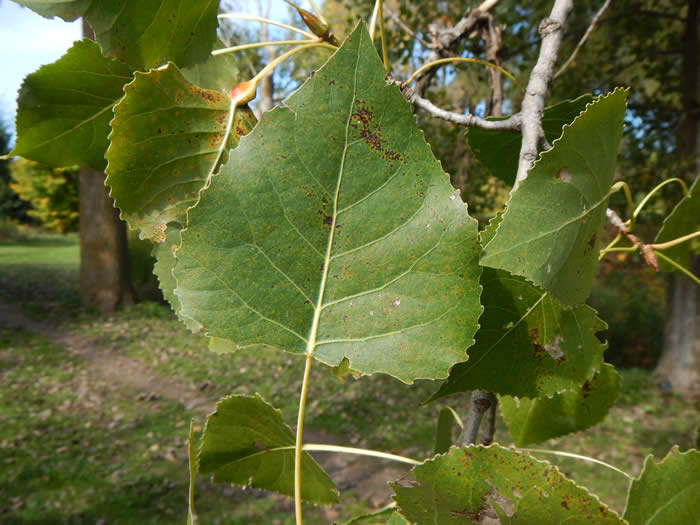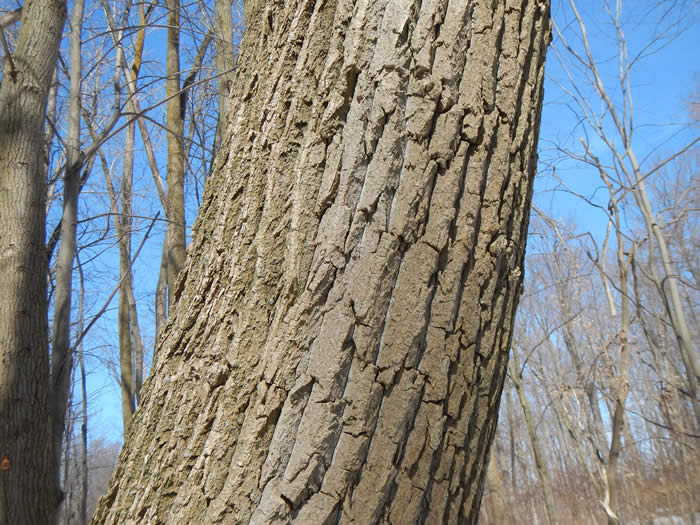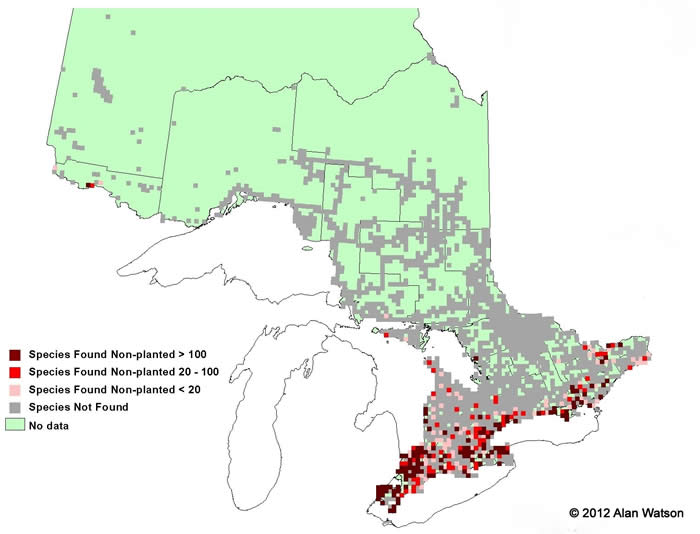Eastern Cottonwood - Populus delotides
This Carolinian poplar species is only found in a few patches of Southern Ontario, but is commercially cultivated for its wood and bark. Eastern Cottonwood are very fast-growing, and can grow to almost 50m in less than 30 years. The leaves of the Eastern Cottonwood contain so much protein that they are actually harvested and fed to livestock in many places. Eastern Cottonwoods, along with many poplars, will readily hybridize with related species, so it can be sometimes difficult to distinguish in the field.

Eastern Cottonwood gets its name from the cottony, silky tufts of hair that are attached to the seeds and help them to disperse in early summer. Photo by Chris Earley.

These rounded triangular leaves are edged with many (40-50) coarse teeth, and have flat stalks. Photo by Chris Earley.

Eastern Cottonwood’s can grow up to 1.2 m in diameter while the mature bark is dark grey or brown and usually furrowed. Photo by Chris Earley.

Ontario Tree Atlas map of non-planted Eastern Cottonwood. 1995-1999.
References
Farrar, J.L.. 1995. Trees in Canada. Fitzhenry & Whiteside Ltd. Toronto. ON. 504 pp.
Kershaw, L. 2001. Trees in Ontario: Including tall shrubs. Lone Pine Publishing. Edmonton. AB. 240 pp
Muma, W. 2011. Ontario Trees and Shrubs. [Online] Available: www.ontariotrees.com
OMNR, 2011. Ontario Ministry of Natural Resources: Ontario Tree Atlas. [Online] Available: http://www.mnr.gov.on.ca/en/Business/ClimateChange/2ColumnSubPage/267027.html
OMNR, 2008. Ontario’s Biodiversity: Species at Risk.